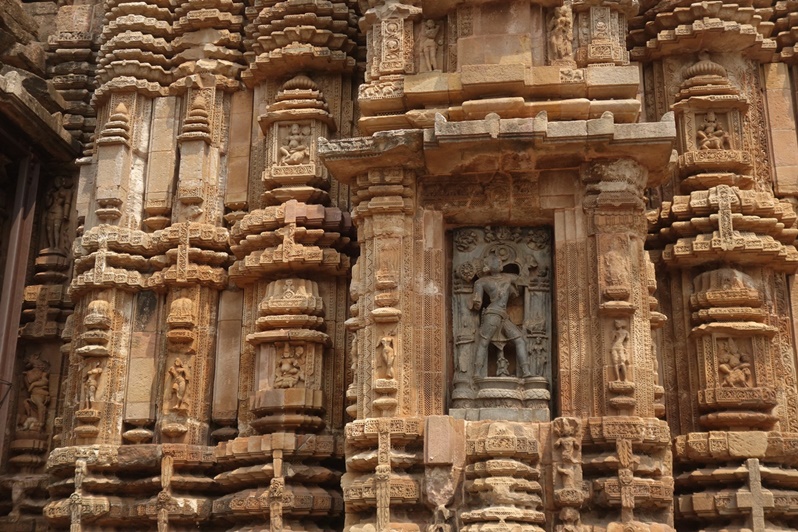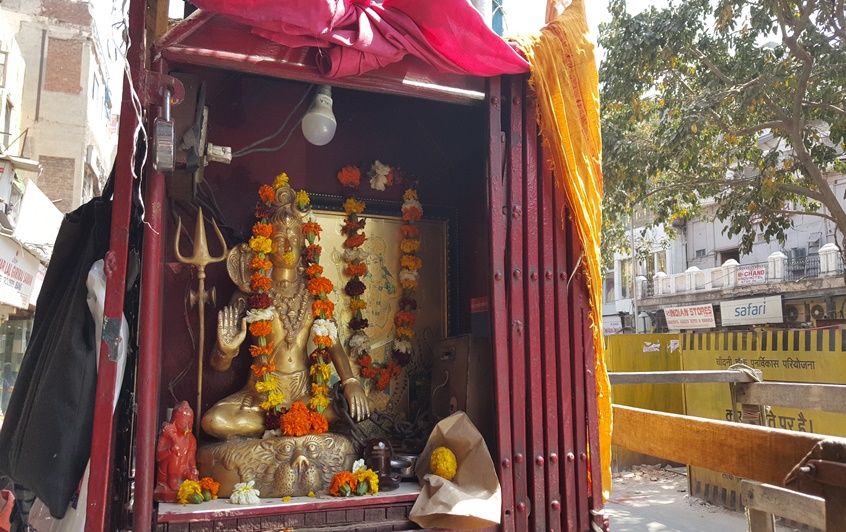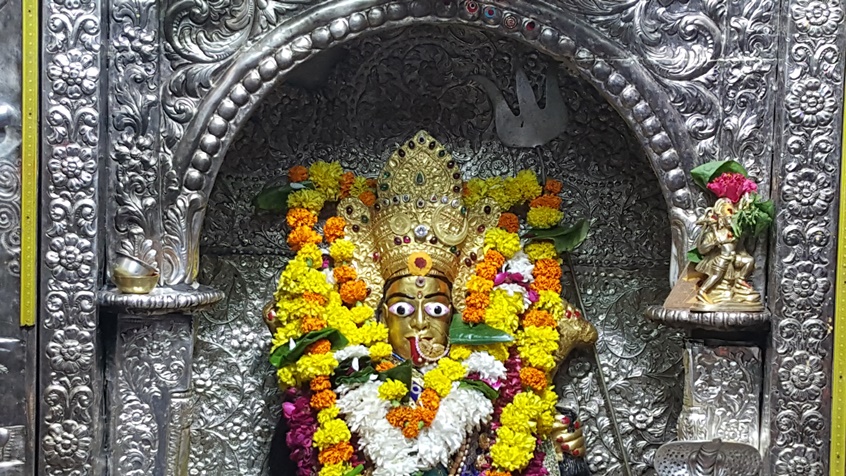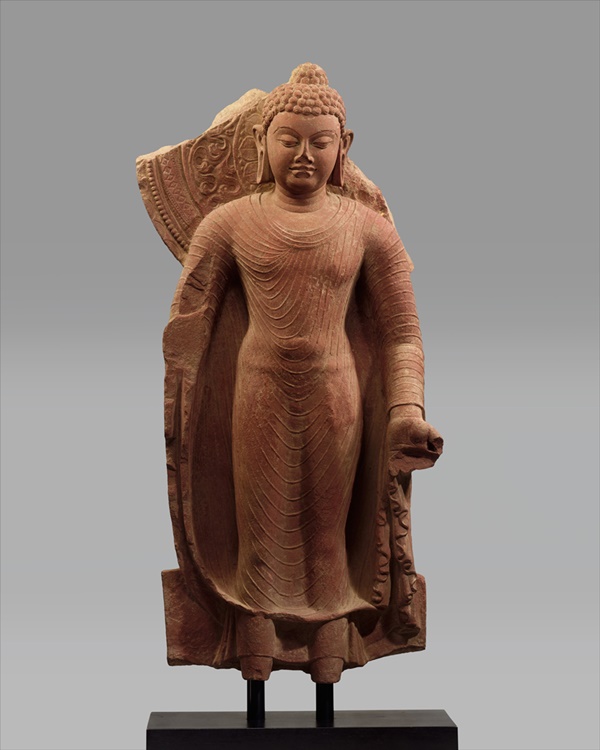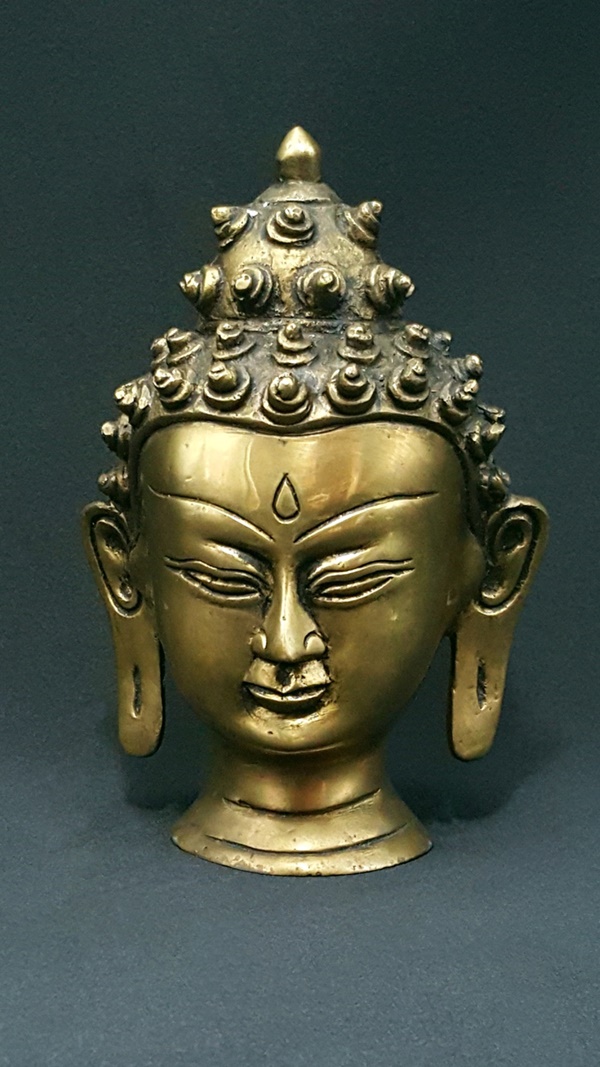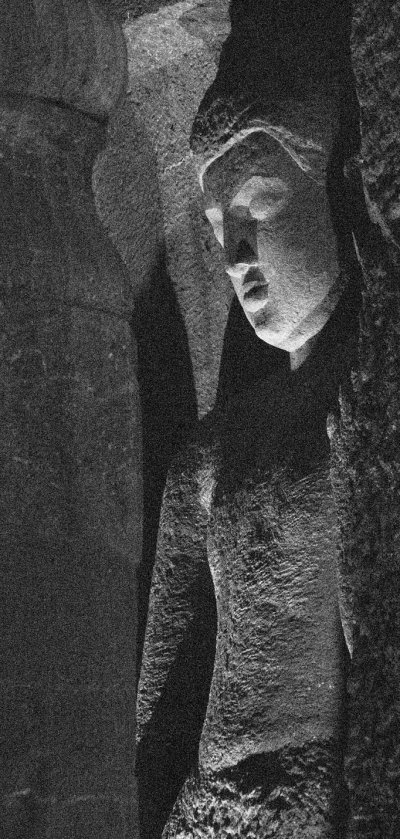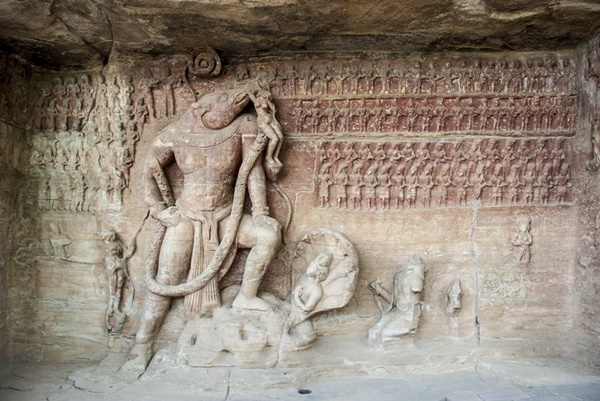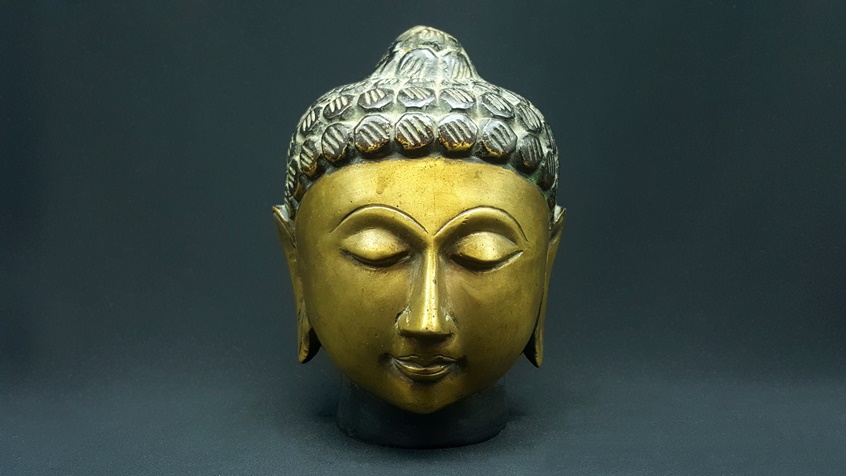
par Bertrand Bellaize, le 10 septembre 2021
Hindouisme et Bouddhisme : Art indien sous le règne des Guptas
Les Guptas, un immense empire
L’empire émergea vers 320 après Jésus Christ dans le Bihar de l’Inde actuelle. Les Guptas étaient une dynastie féodale locale qui conquit progressivement, sous le règne de Samudragupta, tout le nord de l’Inde et fit même payer un tribut aux états voisins, tel le Népal, l’Assam…. Ensuite ses successeurs continuèrent à agrandir leur royaume jusqu’à unifier une grande partie de l’Inde (sauf le sud). L’apogée de l’empire se situe de 415-455 après J-C sous Kamaragupta.
Dès Chandragupta II Le Grand, les fondements religieux et culturels sont établis : cette époque est marquée par un grand raffinement : le pouvoir en place favorise à la fois, le développement du savoir et notamment des connaissances scientifiques mais aussi une vie culturelle extrêmement riche tant dans le domaine de la musique, de la peinture (voir les caves d’Ajanta) de la littérature, de l’architecture que de la sculpture. Cet empire Gupta, sans doute idéalisé, représente un age d’or où régnait l’opulence, la paix qui permirent un extraordinaire développement culturel.
Fortement inspirés par l’art Kushan, qui l’avait précédé et se maintenait dans la ville de Mathura, l’art Gupta va progressivement développer des caractéristiques propres.
L’emblème artistique de cette période peut être une statue en grès rouge, de Bouddha, sculptée debout et surmontée d’un immense halo. La religion bouddhiste est alors la religion dominante parmi l’élite (les aristocrates, les commerçants, les intellectuels...).
Photo Credit Met Museum
La sculpture bouddhiste
Les statues de Bouddhas sont alors très finement ciselées et surtout on peut noter le relâchement des traits par rapport à l’époque Kushan qui privilégiait l’expression de la force, de la vitalité, de l’énergie : une forte impression de détente qui se retrouve dans la qualité des détails et qui est renforcée par la simplicité de l’ensemble. Le style reste très classique et réaliste, héritage des grecs, les formes sont harmonieuses, bien proportionnées ; la recherche de la perfection est primordiale.
L’objectif des artistes est de transmettre une impression de paix profonde liée à un état de réalisation intérieure : libération par rapport au monde manifesté, sérénité, détachement.
Les silhouettes sont élancées, les visages sont marqués par la finesse des traits qui sont peu nombreux : arcades sourcilières juste soulignées, arête du nez bien rectiligne, yeux allongés légèrement protubérants, paupières fermées marquant l’intériorisation. Les oreilles aux lobes étirés (signe d’un port ancien de boucle d’oreilles) marquent l’ancien état princier du Bouddha.
Par ailleurs ces caractéristiques artistiques d’élégance, de perfection vont se retrouver aussi dans l'évolution de l'architecture des Stupas (la forme ronde disparaît au profit de la forme verticale élancée, en flèche), des Bodhisattvas tout comme les personnages princiers qui sont vêtus très simplement avec des bijoux minutieusement ciselés.
La sculpture : un moyen de transmission spirituelle
On peut dégager deux grands styles de l'ère Gupta liés à deux grands lieux de production : Sarnath et Mathura.
Sarnath : le Bouddha est représenté dans un style très épuré, portant des vêtements transparents non plissés (dont on aperçoit souvent que les plis au niveau des poignets ou au niveau des jambes dans la position assise), la tête, entourée d'une auréole, est surmontée de la protubérance typique, les yeux sont mi-clos ou presque fermés : très grande finesse d'exécution exprimant un état de paix intérieure profonde.
L’auréole ou les bas reliefs (par exemple sur une statue de Bouddha prêchant la Loi à Sarnath- 5° siècle), lorsqu’ils sont présents apparaissent au contraire souvent très chargés voire avec une dimension monumentale avec de nombreux motifs, décors et symboles exprimant la vie de Bouddha, son enseignement….
Mathura (à environ 140 km de l'actuelle Dehli au sud) : forme classique, recherche d'équilibre, forme longiligne, utilisation du grès rouge, le Bouddha apparaît avec un vêtement plissé la plupart du temps debout. Les différences avec le style de Sarnath sont minimes, la forme est légèrement plus dynamique (lèvres, sourcils)
La sculpture a pour objectif de donner une représentation du Bouddha mais aussi de transmettre un enseignement : dans les bas reliefs, la vie de Gautama est retranscrite avec les différentes étapes de son cheminement, le Bouddha est aussi représenté avec différents attributs : roue de la vie….Par ailleurs de nombreux éléments de décoration sont présents : animaux, Yakshi (les divinités féminines vivant dans les arbres)...
Pendant cette période, de nombreuses grottes-temples se développent, utilisant les ressources et particularités géologiques naturelles pour développer une sculpture et des peintures spécifiques : on peut citer les sites d'Ajanta, Ellora (4-7° siècles après JC).
La sculpture hindoue
L’art sacré hindou se déploie aussi de manière intense et c’est peut être l’architecture qui connut la plus forte évolution à travers l’évolution de la structure des temples. Dans la période Kushan, les sanctuaires de Shiva, Vishnou… se composaient déjà de plusieurs tours mais sous les Guptas, leur style va se structurer : de base carrée, la tour est surmontée d’un toit plat fait de dalles de pierre. A l’entrée, elle peut être accompagnée de piliers, porches ou colonnes; l’inspiration romaine est marquante mais un style propre va rapidement se déployer : construction du sanctuaire, le coeur du temple où résident les divinités, sur une large plateforme qui évoluera vers la forme d’une croix, entouré d’un déambulatoire couvert, tours à plusieurs étages et enfin ajouts de sanctuaires subsidiaires.
Vers la fin du 5° siècle et dans la période post Gupta, la forme Sikhara (flèche) s’imposa et domina l’architecture sacrée future.
Dans la sculpture hindoue, l’élégance, la simplicité et la sobriété des formes rejoint celle trouvée dans le Bouddhisme : cependant les bas-reliefs de Deogarh (légende de Rama) ou le Varaha d’Udayagri (sculpture de Varaha, 3° avatar de Vishnou sous la forme d’un sanglier) laissent entrevoir un grand foisonnement de sujets et de formes : ils peuvent ainsi relater des épisodes du Ramayana ou du Mahâbhârata (épopées des divinités hindoues), de nombreux personnages sont ciselés : princes, héros, dieux, démons…
L’aspect dynamique des divinités va dépendre de leur manifestation : par exemple Vishnou, sous la forme de Krishna, Matsya… parmi ses nombreux avatars ne représente pas les mêmes qualités que Vishnou, Narayana signifiant « reposant sur les eaux », où c’est l’aspect passif de Vishnou qui est alors exprimé. Un aspect qui met en avant la plénitude, la contemplation, la passivité, l’immobilité : le non agir.
Photo credit : Asitjain, CC BY-SA 3.0)
L’art sacré hindou : une codification rigoureuse
Les représentations des dieux hindous répondent à une codification très rigoureuse : chaque forme prise par une divinité à une signification bien précise : chaque nom d’une divinité correspond à un des aspects de l’absolu et cette manifestation divine va montrer des caractéristiques propres à l’enseignement qui lui est lié. Cette forme va prendre une posture, accomplir des gestes (mudras), revêtir des parures, des couleurs, porter des attributs et armes, être accompagnée d’un environnement, de montures qui chacun transmettent un message bien spécifique.
Les scènes érotiques sont nombreuses car elles représentent l’union du masculin et du féminin soit la disparition de la dualité qui est l’essence même de la recherche spirituelle : les canons esthétiques montrent des femmes, des divinités aux formes généreuses, très sensuelles (seins ronds, hanches larges...).
L’art sacré hindou va donc combiner des sculptures sacrées qui figurent la plénitude, la sérénité ainsi que d’autres insistant sur l’aspect actif, dynamique : l’énergie, la Shakti qui se déploie dans le monde matérialisé (soit le monde dans lequel nous vivons). Il est ainsi en communion avec l’évolution de la religion védique vers l’hindouisme (qui au niveau intellectuel voit apparaître l’écriture des Puranas écrit, à partir du 4° siècle, l’apparition du culte des images…).
Le foisonnement, la richesse des décorations, des personnages… vont continuer à s’accroître dans les siècles futurs, suivant en cela la croissance de la taille des temples hindous.
A la fin de l’ère Guptas, les œuvres commencent à se figer, à perdre leur qualités d’expression répondant plus à des canons esthétiques qu’à la transmission d’un enseignement spirituel.
Durant cette faste période, la production de statues, de temples a été très forte : les œuvres étaient très recherchées et pouvaient même être exportées dans les pays où le bouddhisme se déployait. Mais les invasions des Huns, des Gurjaras... qui ont fait progressivement fait chuté la dynastie Gupta ainsi que toutes les autres qui se sont succédé puis la prédominance de l’islam et l’empire Moghols ont laissé assez peu de témoignages.
Le Bouddhisme et le Jaînisme déclinèrent avec la chute progressive des Guptas tout comme la production artistique qui était financée par le pouvoir et les riches marchands.
Sources
L’art dans le monde Hermann Goetz
Indian Sculpture Garace Morley
Indian Art Roy C Craven
Un et Multiple Sarah Combe
